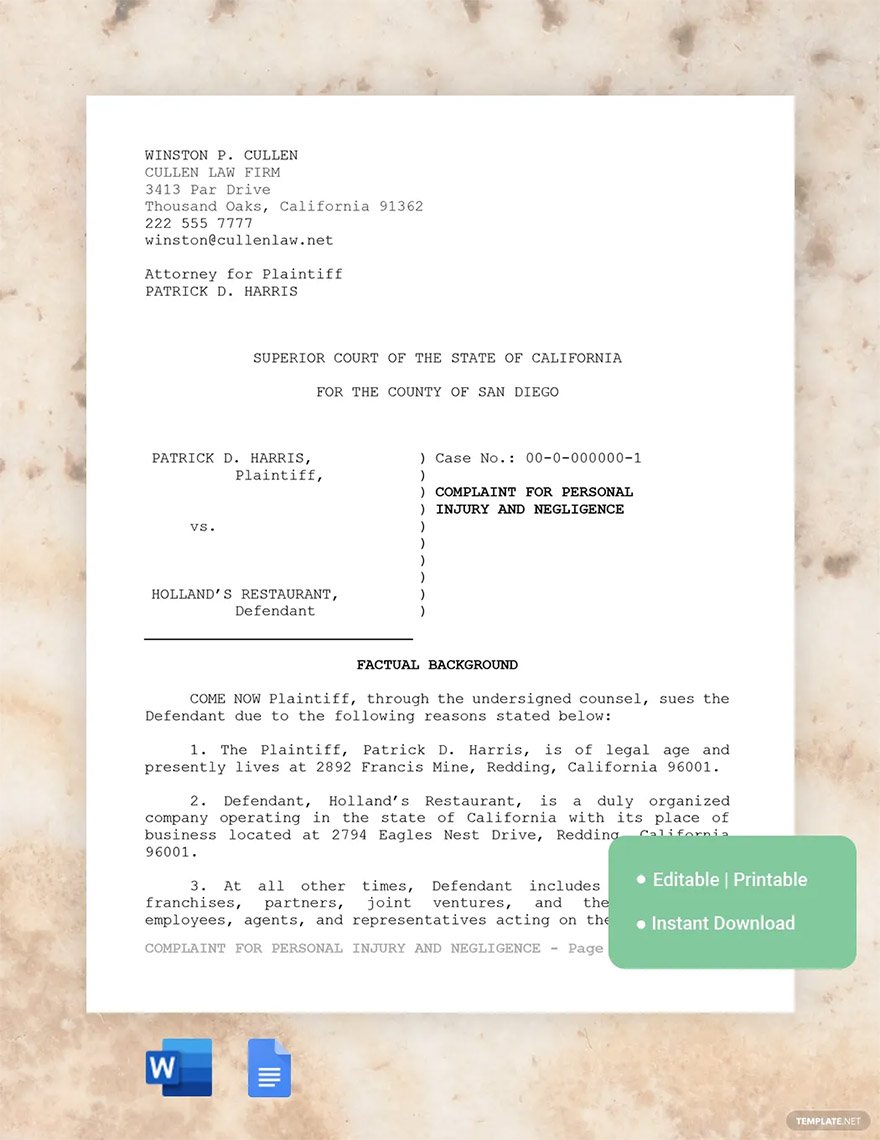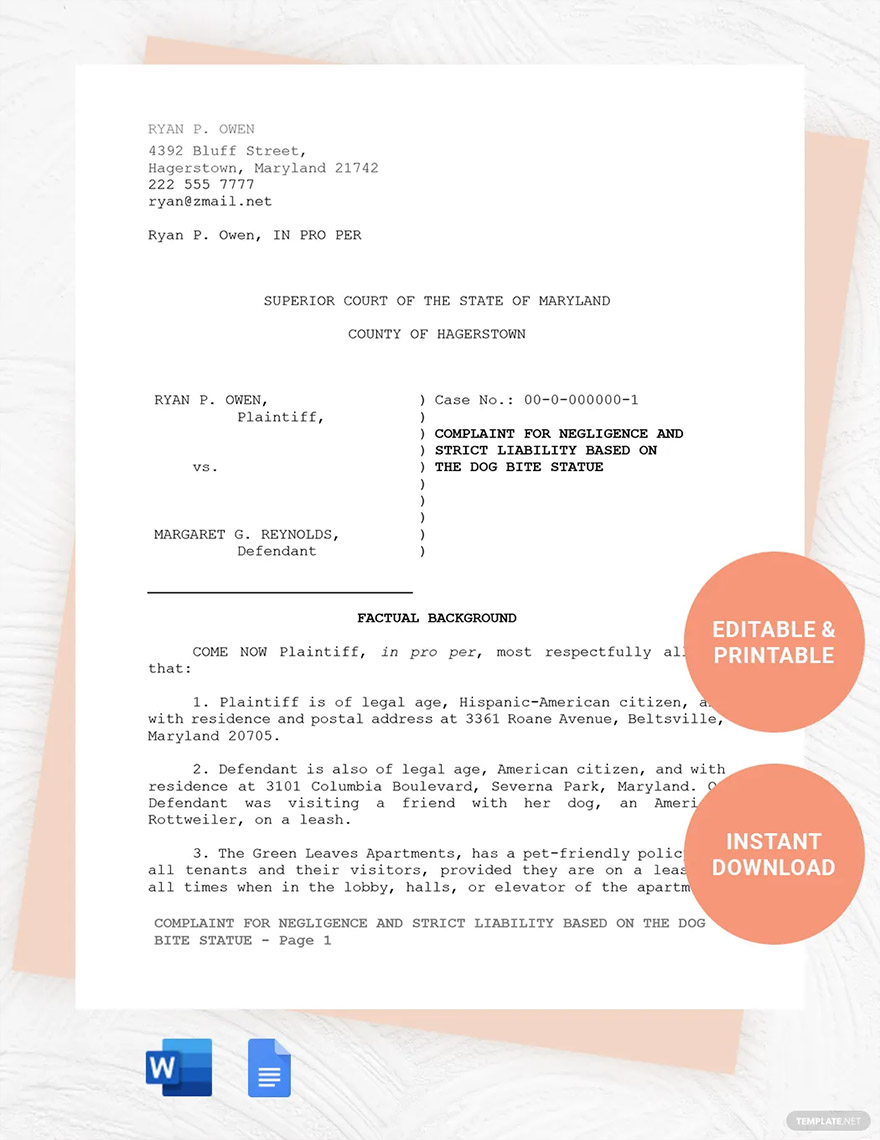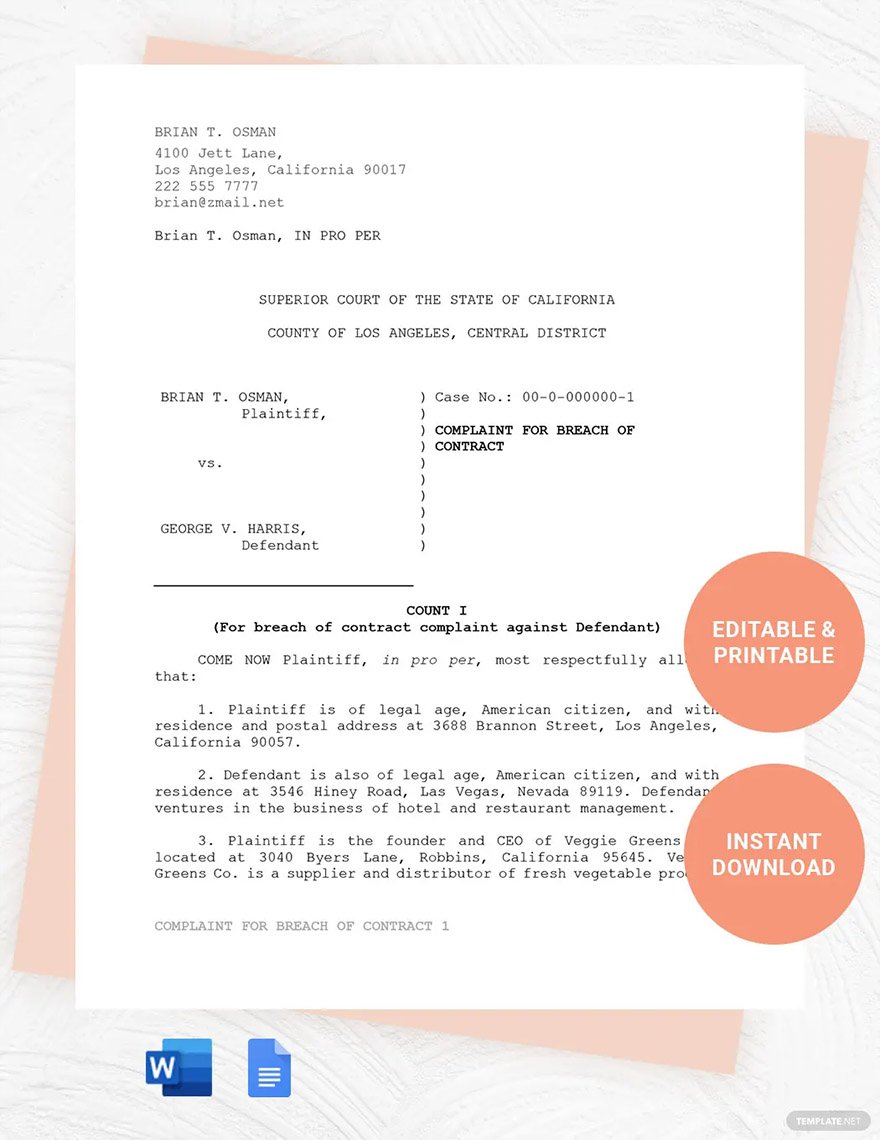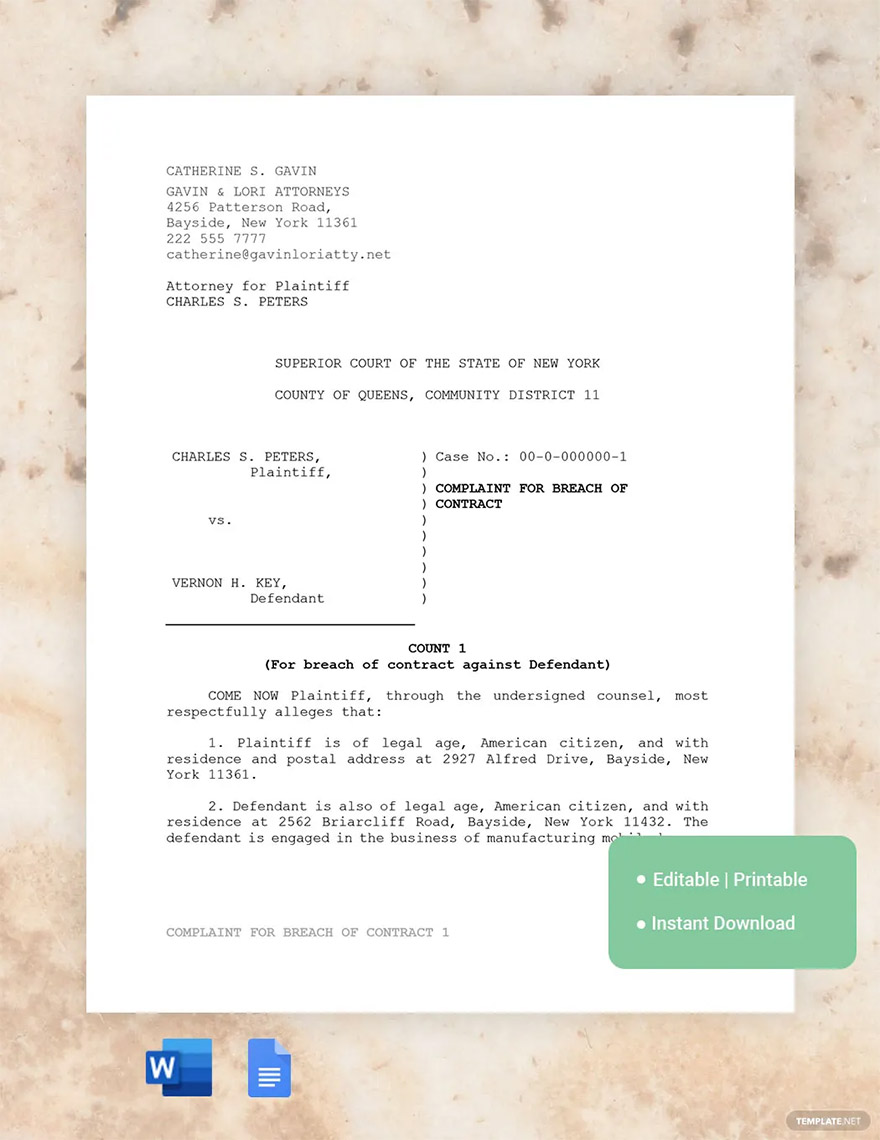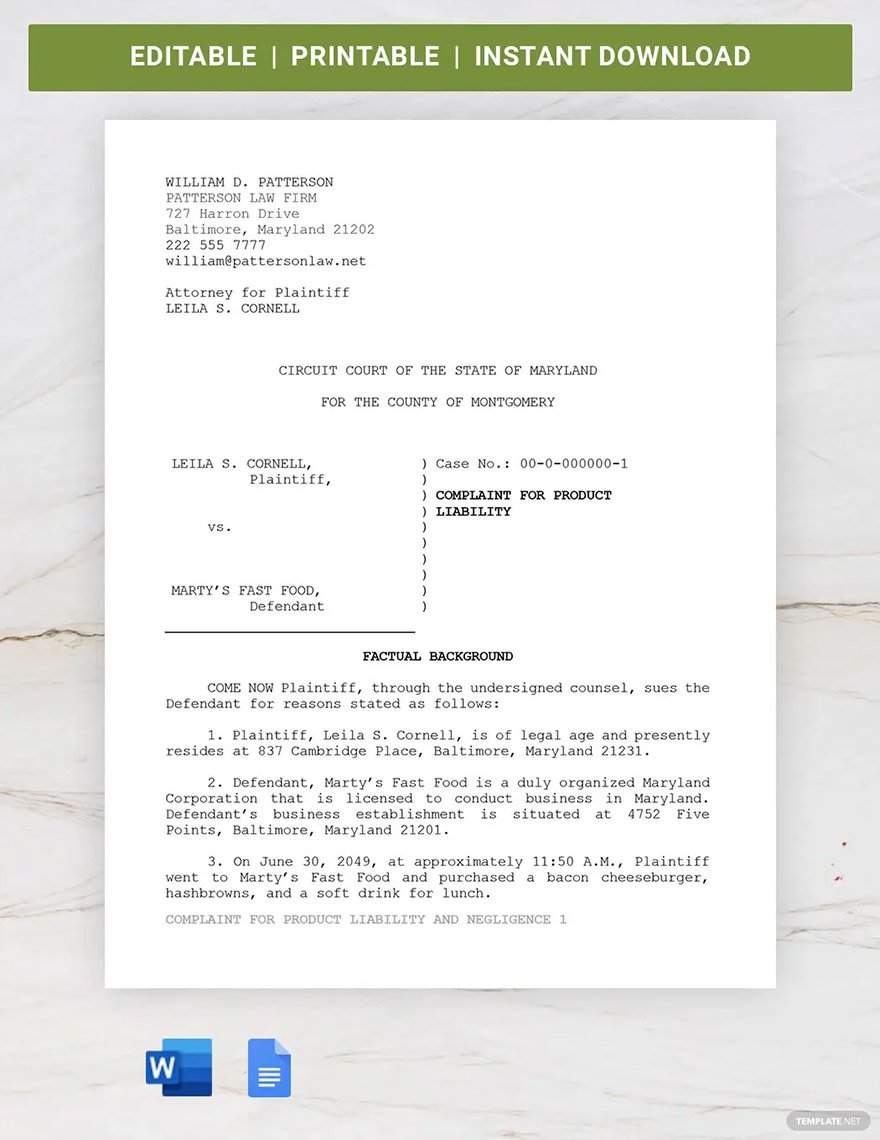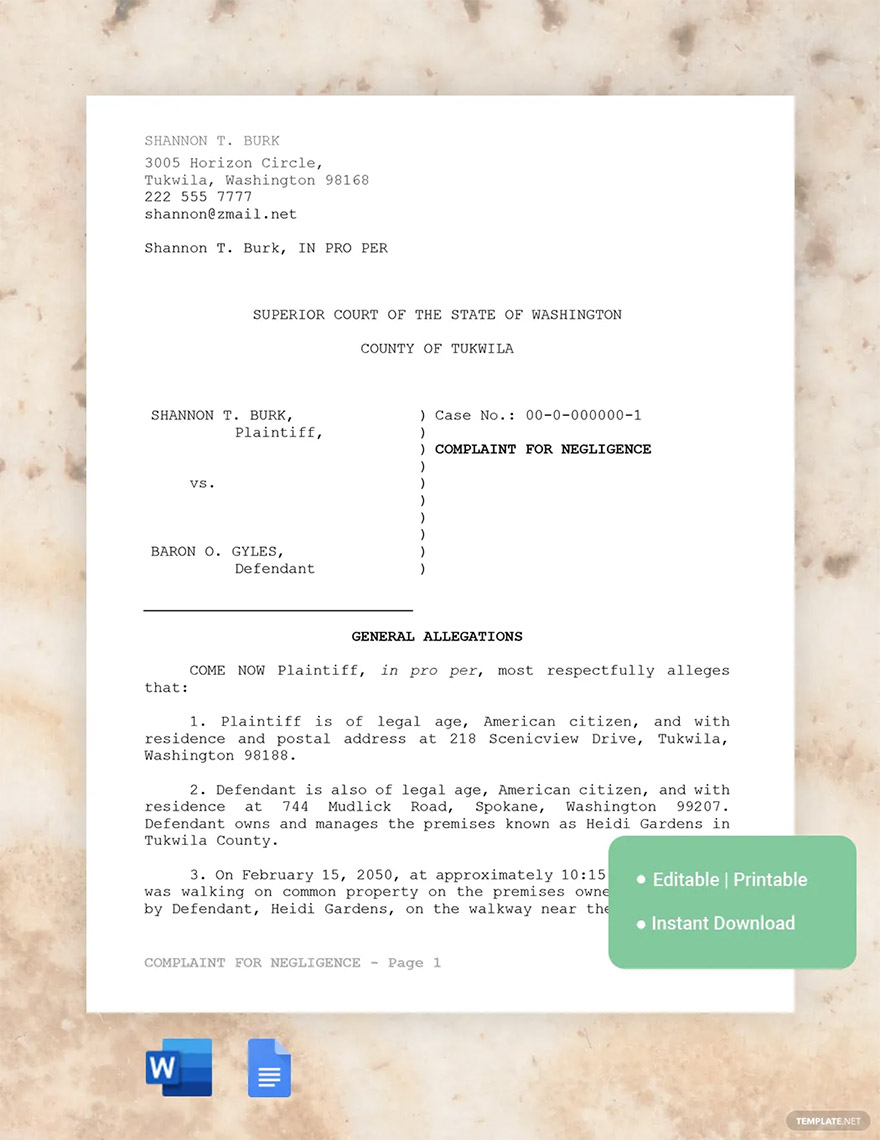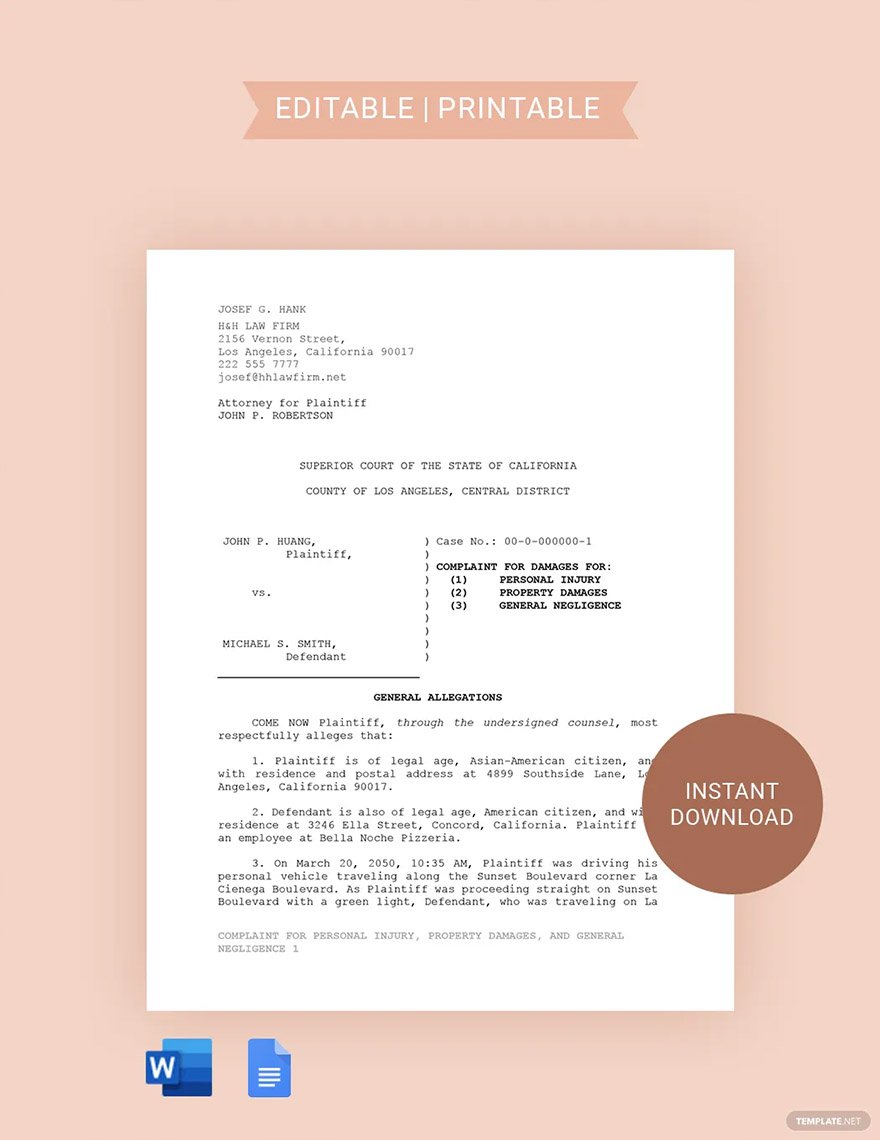Table of Contents
- Pleading Paper Definition & Meaning
- What Is a Pleading Paper?
- 10 Types of Pleading Paper
- Pleading Paper Uses, Purpose, Importance
- What’s in a Pleading Paper? Parts?
- How t Design a Pleading Paper
- Pleading Paper vs. Legal Paper
- What’s the Difference Between Pleading Paper, Statement, and Acknowledgement?
- Pleading Paper Sizes
- Pleading Paper Ideas & Examples
- FAQs
Pleading Paper
Pleading papers describe a specific structure or format of a piece of document that an individual or entity files in court when forms are unavailable for use. These documents are vital for preparing court materials and documents, and persons must be responsible for creating or drafting their pleading paper while following the correct format and court rules.
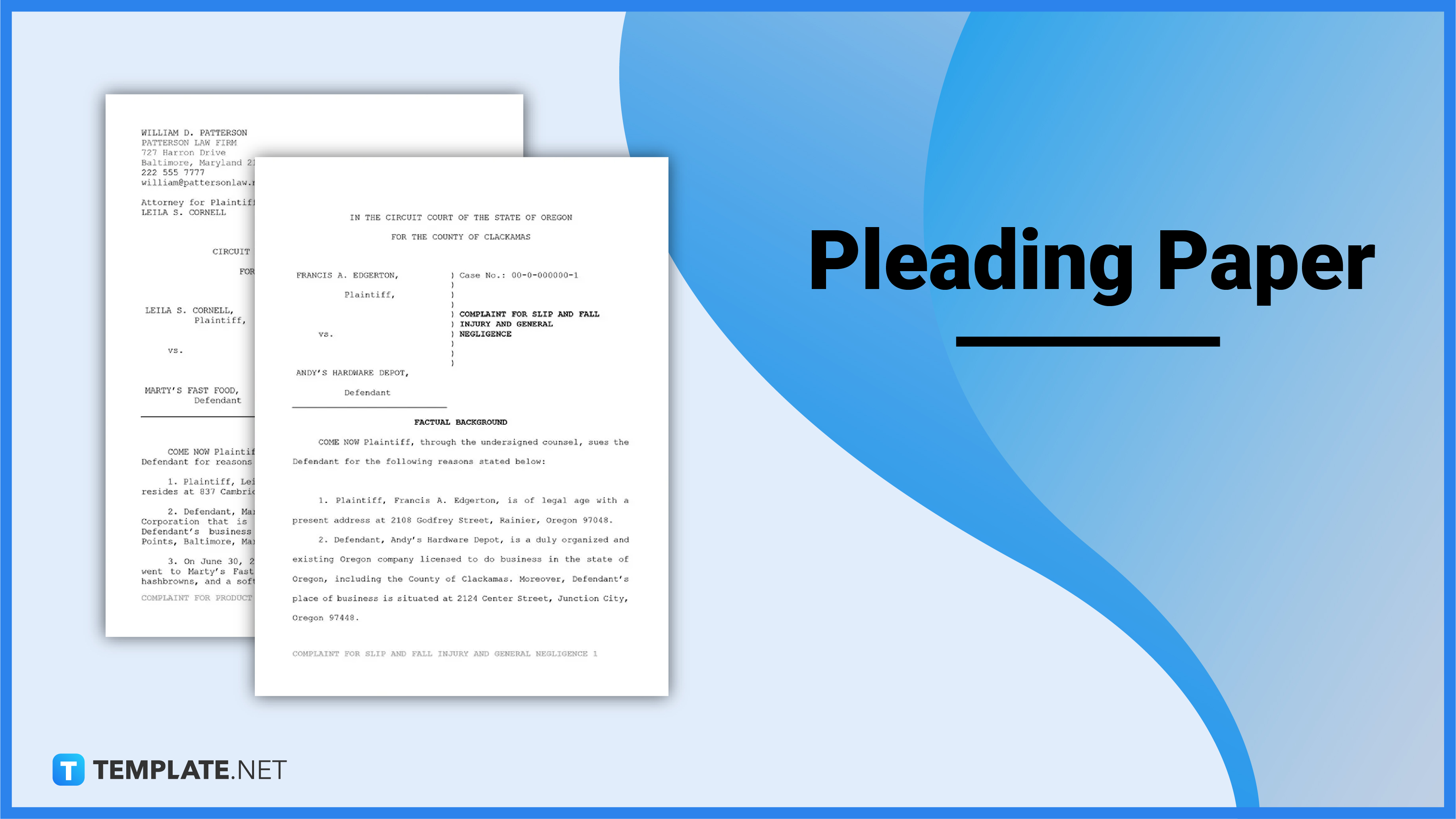
Download the Pleading Paper Article in PDF
File Format:
Pleading Paper Definition & Meaning
Pleading papers are legal documents that a person, company, organization, or any other entity submits to a court, numbered on the left side of the page.
It contains all the necessary information about a case, including the filing texts that an entity turns in as court documents.
What Is a Pleading Paper?
A pleading paper is a legal document that an individual, organization, industry, or any other entity crafts and files in a court, along with other supplementary documents to support a case or trial. It is a court document that triggers a complaint against another person during a civil court hearing or an answer to a complaint, petition, or motion filed against an individual. The document also acts as a formal notification to a judge covering a current case that elicits an unsolicited occurrence requiring the action of judicial interventions.
10 Types of Pleading Paper
Superior Court Pleading Paper
A superior court pleading papers are legal pleading documents that institutions, organizations, and individuals use in jurisdictions that they file to a court before a case hearing. The document contains essential information regarding a claim or a defense concerning a civil lawsuit to demonstrate to a court that the allegations against a party transpire at a particular time. Pleading papers for superior court hearings are available online through a downloadable file that allows individuals to save and edit the document to support their claims.
Washington Pleading Paper
When it comes to court proceedings in the state of Washington, lawyers and attorneys follow the Revised Code of Washington in implementing the format and rules for pleadings under Article 26. Pleadings, motions, and other documents filed in court must be legible like the Washington pleading paper must utilize and implement the mandatory US letter size of 8.5 x 11 inches. The rule applies to all legal documents, including affidavits, divorce documents, deposition statements, or child custody cases, to all courts in the state of Washington.
Red Ruled Pleading Paper
For individuals writing their pleading papers without retrieving a form from the homepage of the state of justice systems for a specific jurisdiction, individuals and organizations can utilize a red ruled pleading paper for their pleading documents. A red-ruled pleading paper is a legal paper acceptable in court trials and hearings with a red-ruled edge on the left side of the paper. These sheets of paper comply with the crucial requirements, rules, and regulations of the justice secretary and judicial courts.
Oregon Pleading Paper
In the District of Oregon, individuals, companies, industries, and other entities follow the Oregon Revised Statutes for the standards when drafting pleading papers when their offices can provide forms. The Oregon pleading paper is a legal document that must follow the standard size of the US letter size paper, using doubled lines and a paper with numbered lines. If an attorney prepares the document’s content, it must include the attorney’s vital information, the firm they represent, and the Bar number of the author and trial attorney.
Numbered Pleading Paper
As many courts and jurisdictions require the pleading and court documents that individuals prepare to have numbered lines per page, persons must use a numbered pleading paper to compose their statements. Many jurisdictions have pleading papers on their websites that individuals can use and download, filling it with the necessary information. The downloadable files are editable in many word processing applications, and people can fill in the missing information by themselves or with the help of attorneys handling the case.
Legal Pleading Paper
A legal pleading paper commonly contains over 28 lines where individuals input their statements and claims regarding a case or charge against them, pleading their situation to a court of law. Legal pleading papers follow the standard US letter size that individuals can claim from the Office of the Justice Commission, along with other legal documents like service and notice orders. Pleading the case using a legal pleading paper ensures that the processes leading to the court hearing go smoothly by following the court requirements.
General Pleading Paper
General pleading papers are plain court papers that enable individuals to construct their statements in the required format by the United States courts and the various jurisdictions that follow their standardized codes and laws. Many websites provide a template from their library for general pleading papers that individuals can use when pre-made forms from the district or court offices. Using the general pleading paper is advantageous as many courts accept its format, following the general rules and guidelines set forth by the Supreme Court.
Blank Pleading Paper
Blank pleading papers are helpful documents for individuals planning to draft a pleading document for court without the availability of a pre-formatted form coming from a court. Many online resources provide users with the ability to download blank forms to help them develop legal documents to plead their cases. Develop comprehensive pleading documents with an attorney before submitting or filing them to the court to ensure that the inputted information follows the requirements the court needs to make a fair and just judgment of a case.
Complaint Pleading Paper
A complaint pleading paper is prevalent when conducting court hearings about civil cases. As such, an individual, company, or institution must compose an answer, reply, and counterclaim utilizing the format of the pleading paper and ensure uniformity in the documents that the involved parties submit to a court. Complainants and defendants must compose the document in the presence of an attorney supporting them in the trial to ensure that the incorporated information in the pleading papers aligns with statements, scripts, and facts.
California Pleading Paper
The state of California provides users with legal forms under the name of Judicial Council forms for many civil and criminal cases. Before downloading a California pleading paper, the website ensures that it is the exact form the person needs to impact or address the legal problem before redirecting them to the download page. These are plain forms that provide the statutory format for creating the legal document before presenting the final draft in court.
Pleading Paper Uses, Purpose, Importance
The pleading court process sets out the facts of a civil or criminal case that states all information about the matter, helping courts to provide the parties’ rights and allowing the opposing party to know the facts. Providing a pleading paper promotes the court trials and rulings to be clear and timely.
Orderly Disposition of Litigation
Producing pleading papers allows the court to ensure an orderly judicial process present in the court trial. It helps implement the conventional procedure of litigation, exchanges of written pleadings, and the intervention of the court to enforce rules. It ensures there is a straightforward process that shows no bias between the complainant and the defendant of the case.
Notice to the Opposing Party
Pleading papers allow the court to recognize and reference the case to the opposing party, stating the facts and information about the issue at hand. An attorney preparing to defend the case is substantially handicapped if there are detailed facts that he does not recognize from the opponent’s presentation of factual information. The information in the pleading papers must be sufficient to direct and bring the purpose of the investigation and preparation for defense.
Allocate the Case Between the Parties
Each court hearing must determine the essential elements to help judges to decide on the best bearing after identifying the result. The actions must have an initial determination if the case is a prima facie case for a plaintiff to justify the court’s decision in their favor if no other pleads surface during the trial. A pleading paper help determine the specific case both parties are currently facing by performing a preliminary screening to decide the factors relevant to the issue.
Isolate the Area of Actual Debate
Pleading papers act as a reference to pinpoint the primary argument between a defendant and complainant when court proceedings begin. Initiating summary judgment procedures aside from the pleading process guarantees are more effective means to eliminate prejudice or untrue issues. Through the proper facts and summary disclosures, pleading papers constitute sensible means of ascertaining the area of argument.
Ascertain the Applicable and Substantive Rules
During a court trial, there must be a decision about whether the facts a plaintiff delivers are sufficient grounds for recovery or whether the defendant produces a satisfactory defense. The pleading paper provides a substantial theory to determine which elements are adequate to rule the argument or claims. The substantive application comes from the inspection of the pleading papers available to the court.
What’s in a Pleading Paper? Parts?
Caption
The caption indicates the court’s name, the title of the action, and the assigned docket number upon its availability. The title of the action must comprise the parties’ names according to the original complaint or petition.
Body
The body of the pleading paper assigns the designation, allegations of the party’s claims or defenses, list of reliefs, and the pleading date. The body must contain paragraphs containing statements of a circumstance with numbers for each paragraph.
Signature and Address
Each pleading and written submission must have the signature of the party and the counsel representing their person. Counsel signatures constitute a certificate of recognition about the pleading and document to the best of their knowledge and belief under distinct circumstances.
Verification
Pleading papers must be verified under oath, aside from any other lawful specifications, with the pleading verified by an affidavit or affiant through signing and stamping the document. Affiant authorizations must also be available in the pleading with the necessary attestations from the person.
Certification Against Forum Shopping
A plaintiff or the principal party must certify under oath that they have not filed a similar claim in another court of law, under a different jurisdiction, and there is no pending claim in any other court, or that if there is a pending claim that they must report it within five calendar days. Any authorizations from the affiant must also be attached to the pleading paper.
Contents
A pleading paper must have the names of the witnesses to prove a party’s defense or claim during a trial. It must also have the intended testimonies of the witnesses with judicial affidavits and the documented and objective pieces of evidence to support the allegations in the pleading.
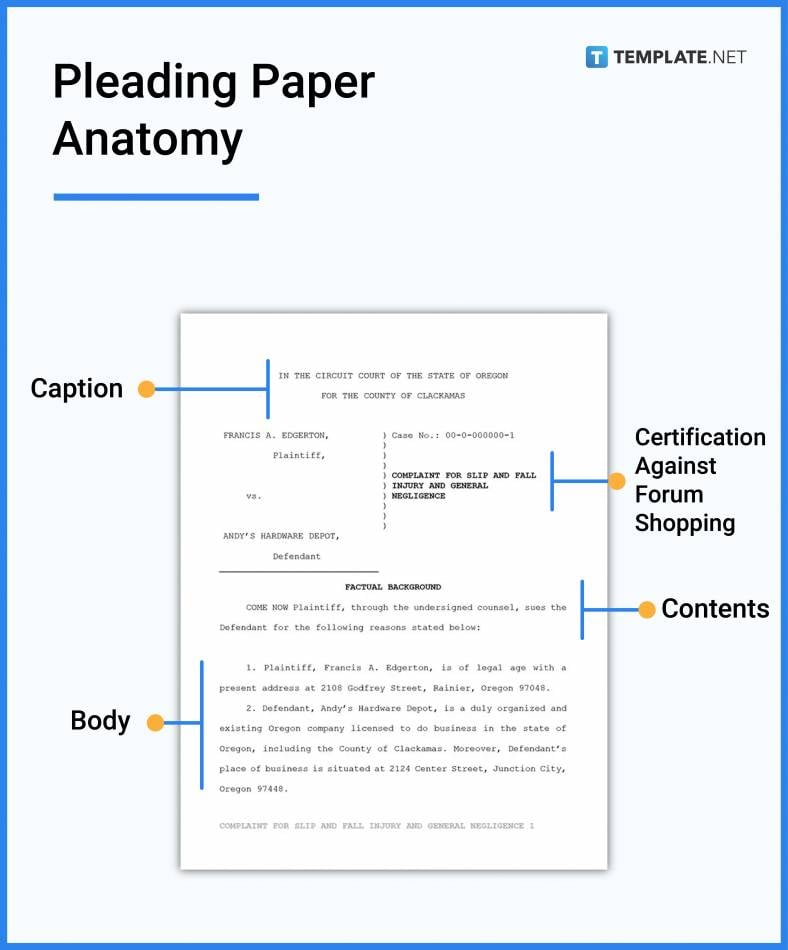
How t Design a Pleading Paper
1. Choose the Pleading Paper Size
2. Determine the purpose of the pleading paper
3. Select a Pleading Paper Template
4. Indicate identifying information
5. Add a caption
6. Draft the body of the pleading paper
7. Affix the date and signature
8. Attach a certificate of service
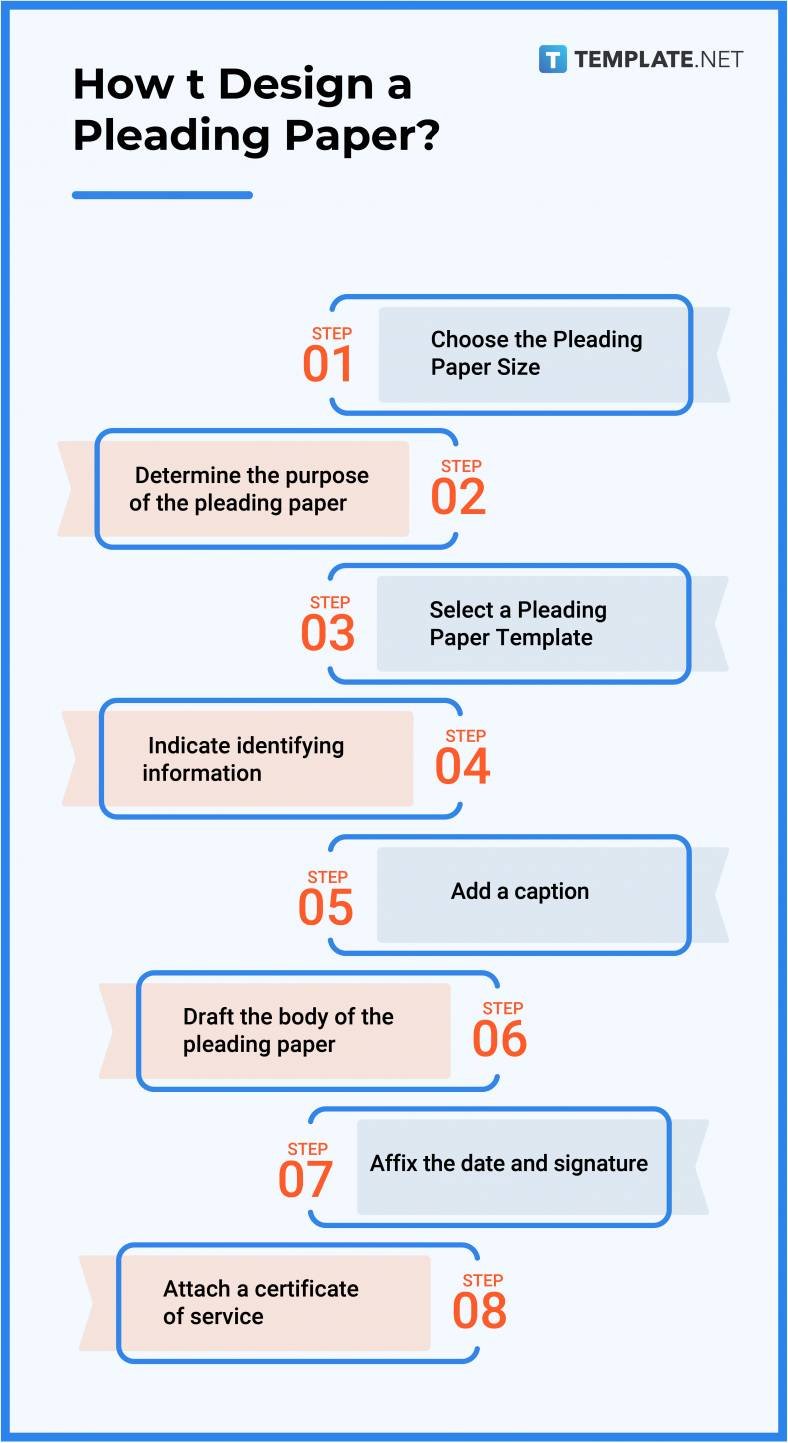
Pleading Paper vs. Legal Paper
A pleading paper contains a format that individuals use in the court of law when filing for a pleading that they will use for a court hearing or trial.
A legal paper is a standardized paper that individuals and companies use to produce legal documents for court use or submit files to government agencies.
What’s the Difference Between Pleading Paper, Statement, and Acknowledgement?
Pleading papers are formal court documents that a presiding court requires from the parties before the beginning of court proceedings.
Statements are sentences that are present in legal documents that detail the respective claims and defenses of the parties for appropriate and unbiased consideration in trials.
Acknowledgments are proof that the court uses to verify the signatory’s identity and confirm that they signed the document without coercion.
Pleading Paper Sizes
Pleading papers are legal documents that many businesses and individuals use to bring their claims and defenses clear, following the facts of a specific claim. Using the standardized pleading paper sizes guarantees that the court accepts the pleading document from a complainant or defendant.
- Letter (8.5 x 11)
- Legal (8.5 x 14)
- A4 (8.3 × 11.7)
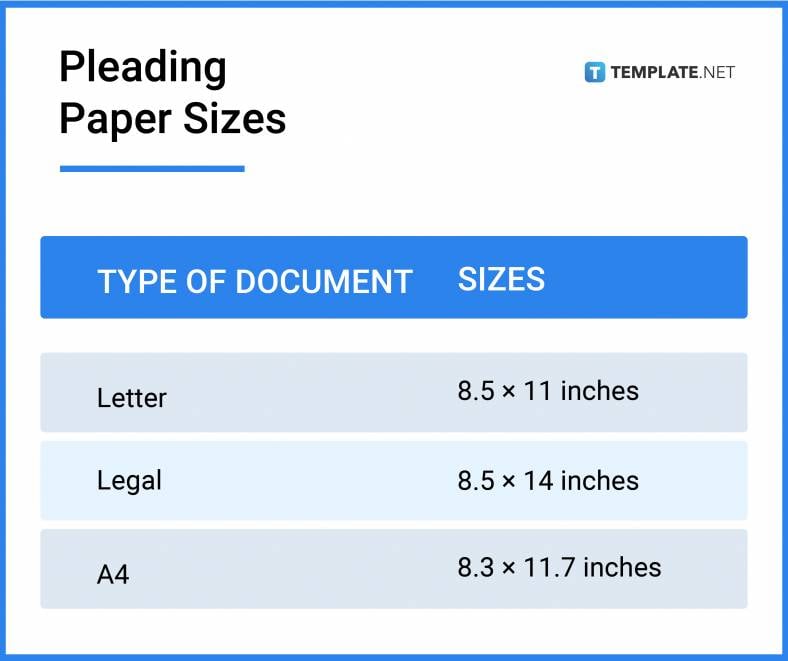
Pleading Paper Ideas & Examples
Pleading papers are formal court documents following the state and jurisdiction applying specific formats for their court documents. An individual must be familiar with various pleading paper ideas and examples they can use according to the requirements of each location.
- Pleading Paper Ideas and Examples
- Court Pleading Paper Ideas and Examples
- Arizona Pleading Paper Ideas and Examples
- Alameda Pleading Paper Ideas and Examples
- 28 Line Pleading Paper Ideas and Examples
- 25 Line Pleading Paper Ideas and Examples
- Sample Pleading Paper Ideas and Examples
FAQs
What are the rules for a pleading paper?
Pleading papers must follow the format from court requirements, with the document having the caption of the parties’ names, the title, file numbers, and court designation, containing numbered paragraphs, and producing and attaching supplementary statements.
What are pleading papers in law?
Pleading papers are legal documents that an individual, whether a complainant or defendant, completes and submits to a court of law to support a case or trial.
What is a pleading paper used for?
Pleading papers help the courts to determine the parties’ rights to the trial and allow the opposition to verify and acknowledge the facts of the case.
What is the structure of a pleading paper?
The components of a pleading paper must have a caption, body, signature and address, verification, contents, and certification against forum shopping.
What are pleading papers in a civil procedure?
Pleading papers in a civil case are documents that contain written claims and defenses from involved parties to support and enable the court to make a fair judgment.
What is the most important part of a pleading paper?
The most vital component of a pleading paper is the body containing statements from defendants and complainants stating their facts of the case.
What does a pleading paper look like?
A pleading paper is a numbered paper on the left-hand side that individuals use to submit court documents.
Why are pleading papers important for a case?
Pleading papers are relevant to court cases as they provide orderly litigation processes, allocate cases between parties, and isolate the area of argument.
How do you prepare for an oral pleading paper?
To prepare for an oral pleading, practice intense preparation, organize and rehearse arguments, commit them to memory, and perform last-minute preparations.
What should be included in a pleading paper?
A pleading paper must contain a caption, body, signature and address, verification, contents, and certification against forum shopping.





